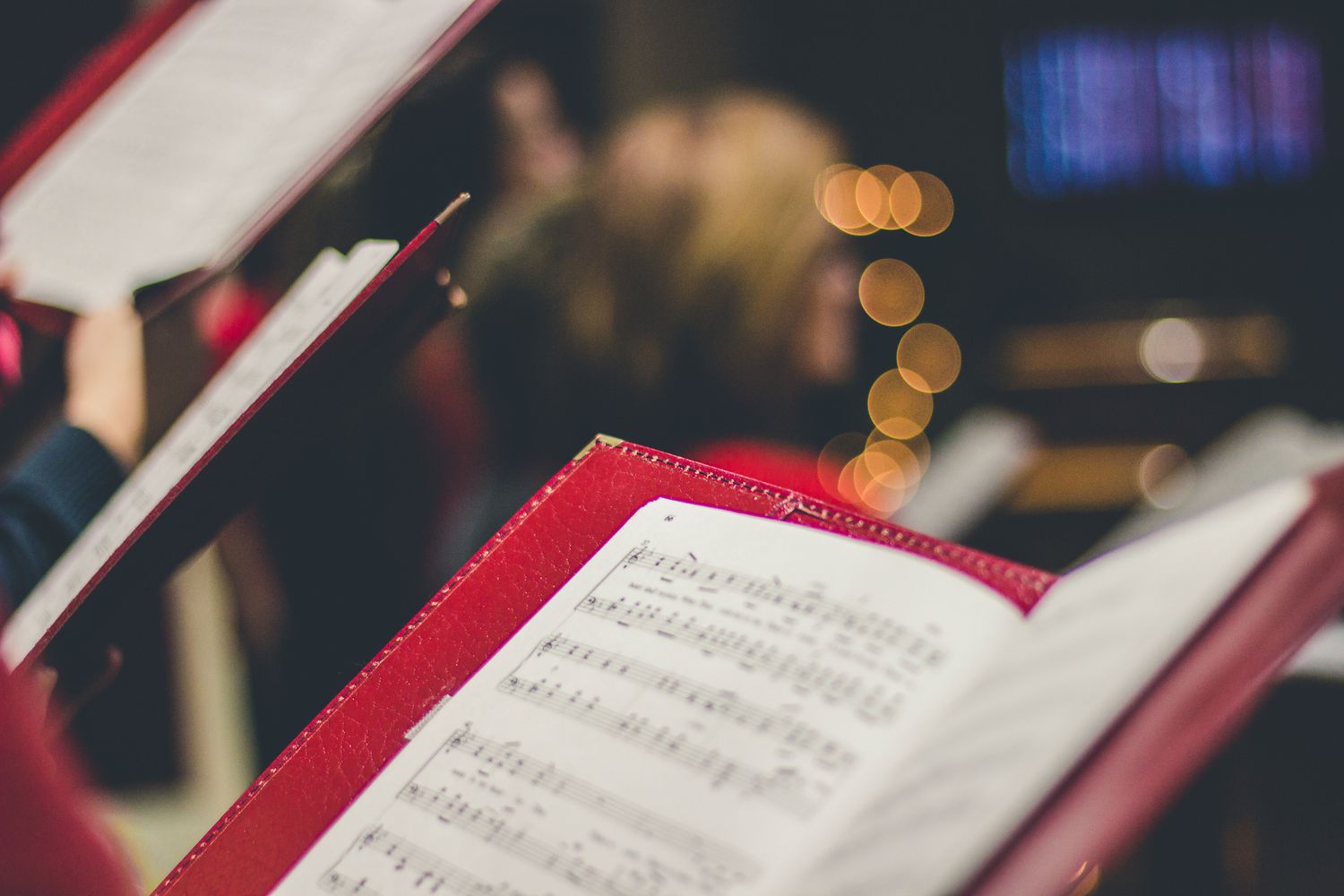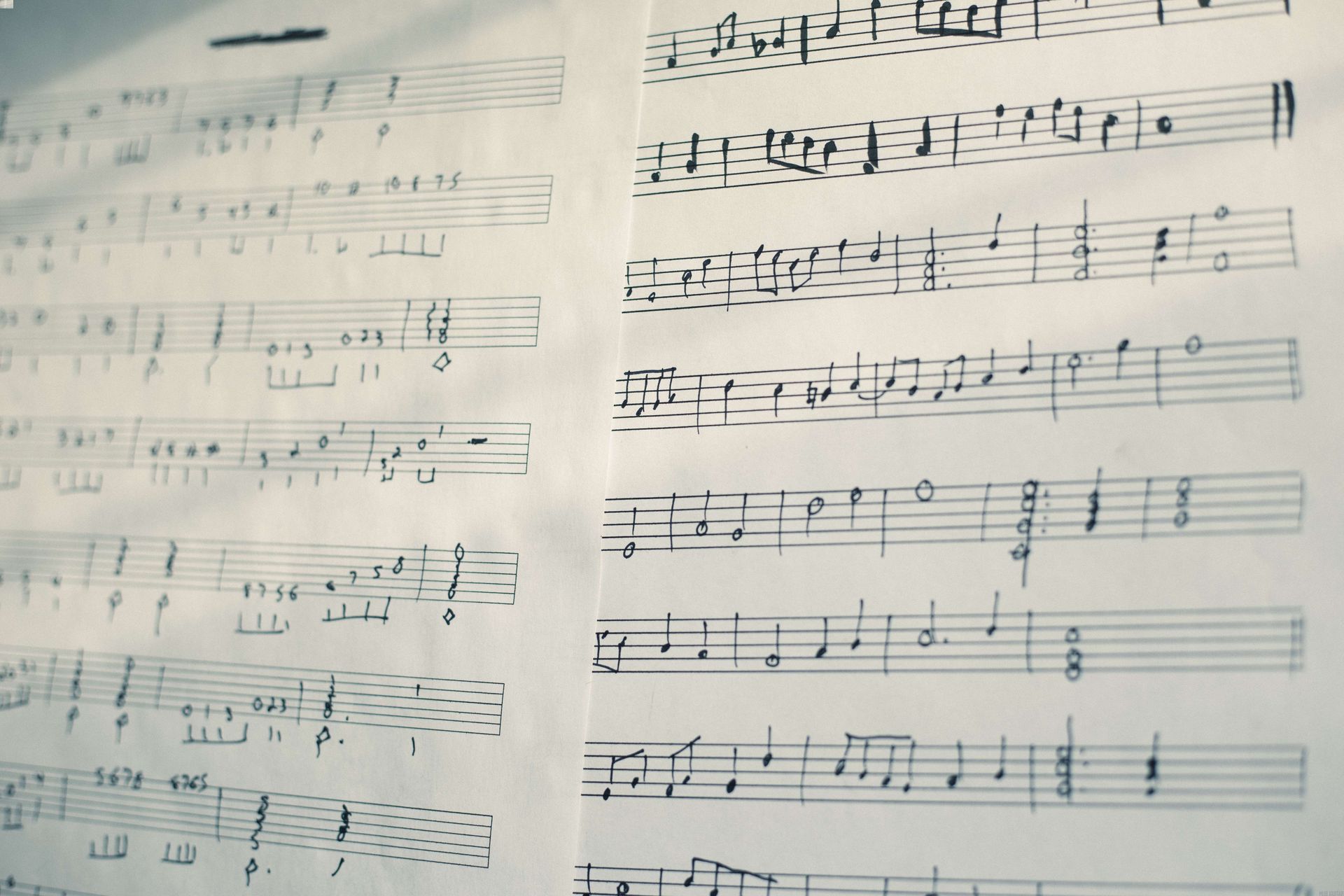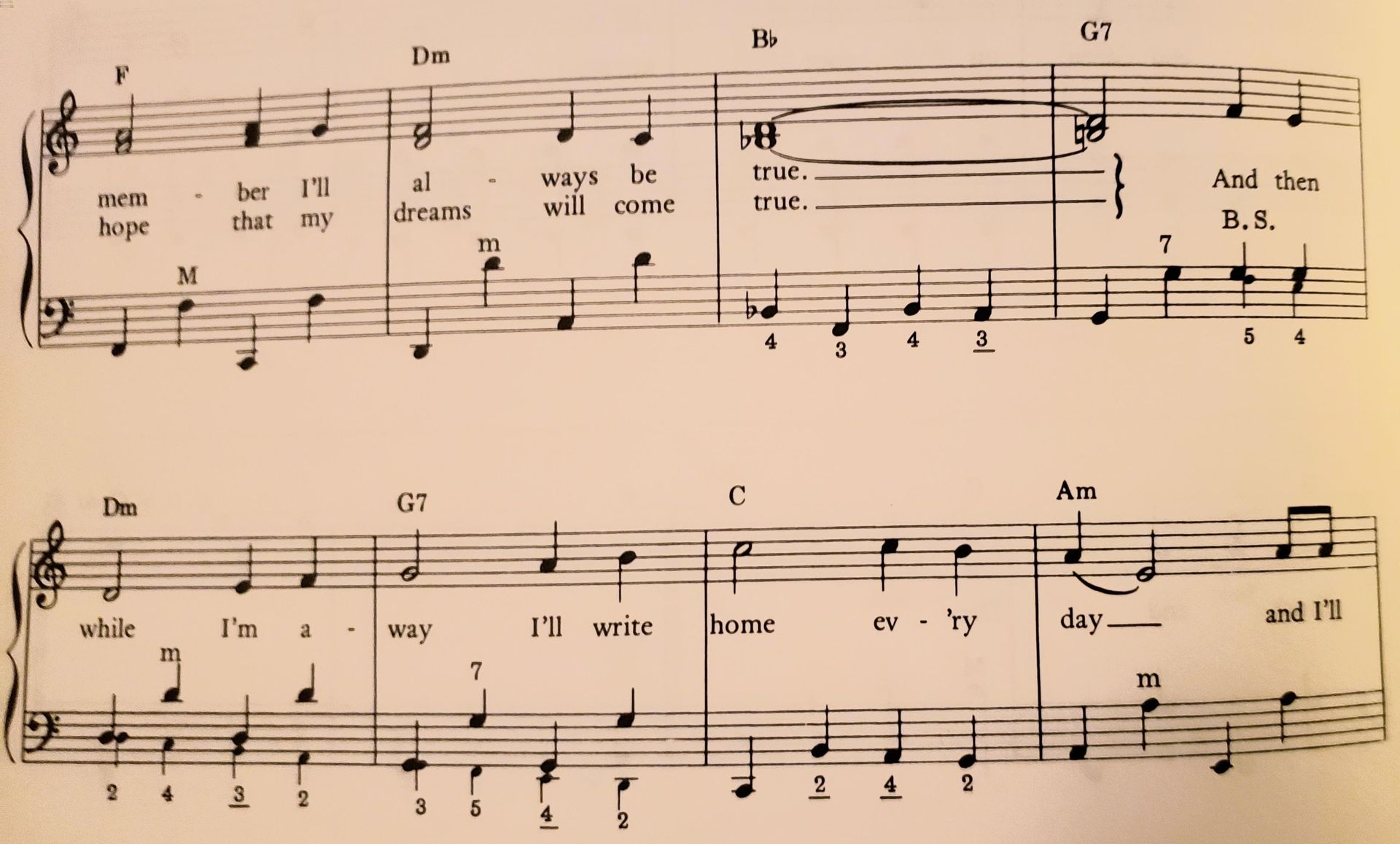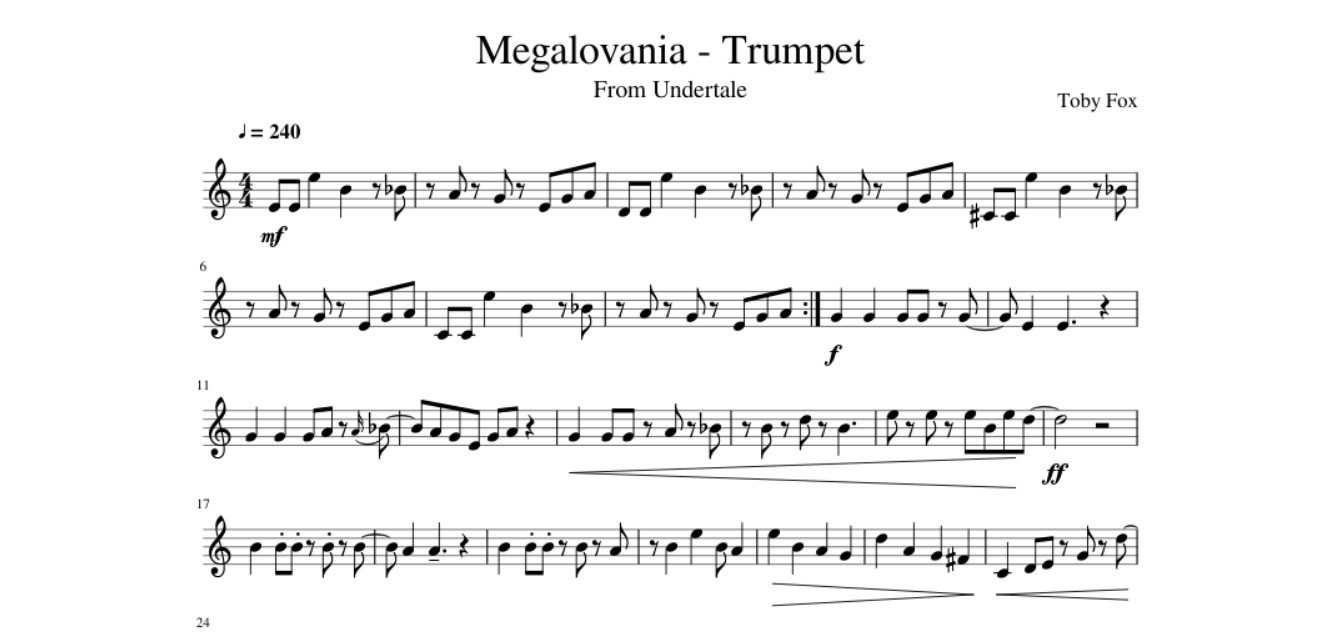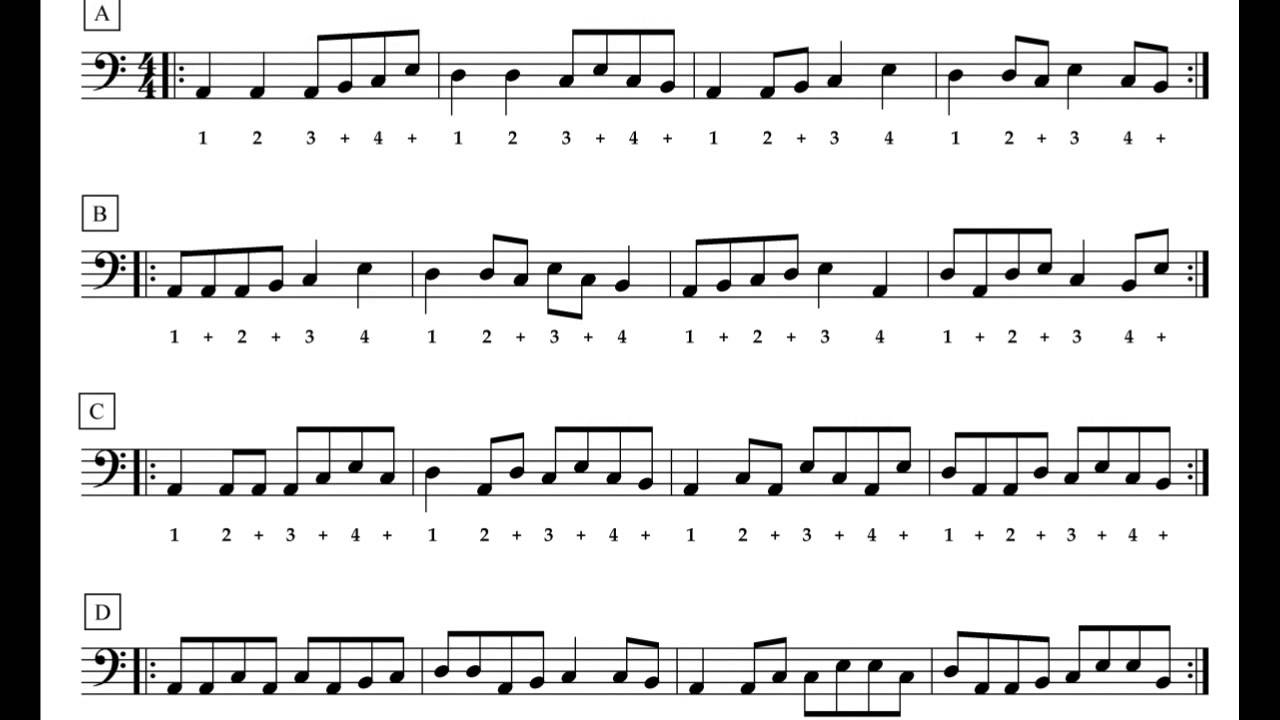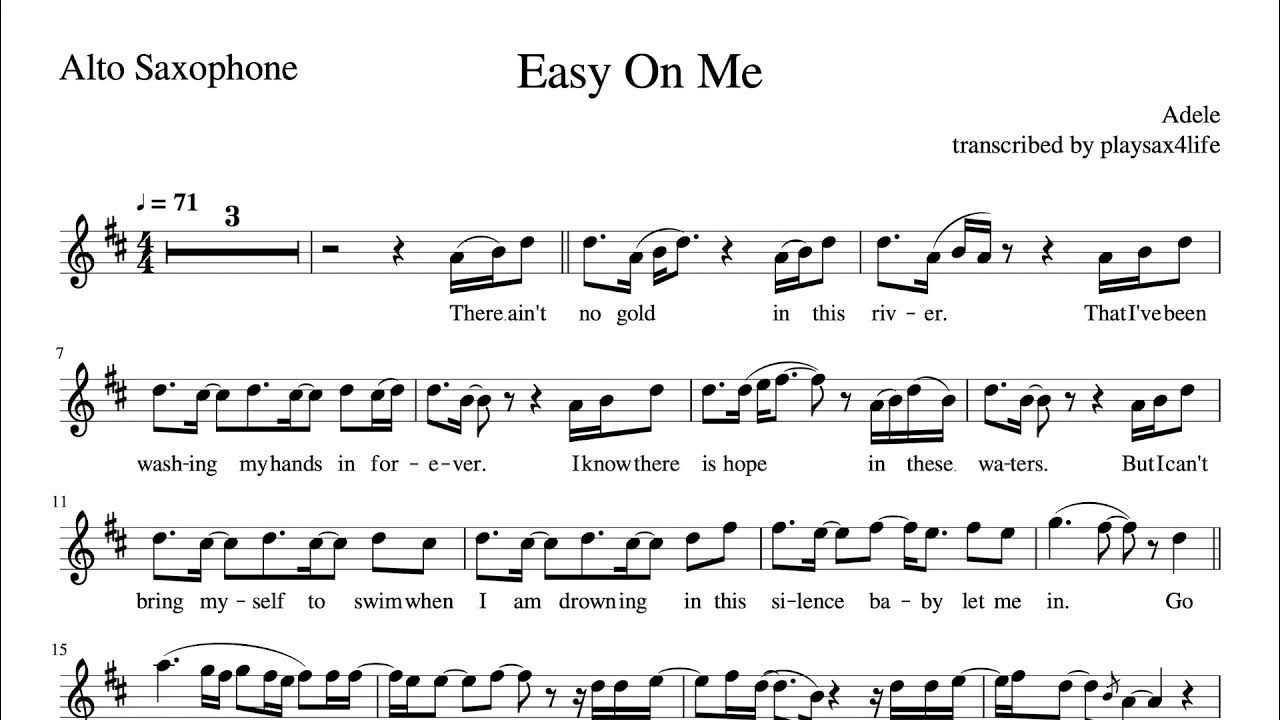Home>Production & Technology>Sheet Music>How To Read Harmonica Sheet Music


Sheet Music
How To Read Harmonica Sheet Music
Modified: January 22, 2024
Learn how to read harmonica sheet music easily and effectively with our comprehensive guide. Master the art of playing by understanding sheet music and its notation.
(Many of the links in this article redirect to a specific reviewed product. Your purchase of these products through affiliate links helps to generate commission for AudioLover.com, at no extra cost. Learn more)
Table of Contents
Introduction
Welcome to the exciting world of sheet music for harmonica! Whether you’re a beginner just starting on this mesmerizing instrument or a seasoned player looking to expand your repertoire, understanding how to read and interpret sheet music is an essential skill to have.
Sheet music provides a roadmap for musicians, guiding them through the notes, rhythms, dynamics, and other musical elements that make up a song. By mastering the art of reading sheet music, you open up a universe of musical possibilities, enabling you to play a wide range of genres and tunes on your harmonica.
In this comprehensive guide, we will dive into the fundamentals of harmonica sheet music. From understanding notation symbols and reading the musical staff to interpreting rhythms, note durations, and dynamics, we’ll cover everything you need to know to confidently read and play sheet music on your harmonica.
Whether you’re playing classical compositions, folk tunes, blues riffs, or even jazz improvisations, sheet music acts as a universal language for musicians. By learning how to read sheet music, you’ll be able to communicate and recreate the intended musical ideas of the composers and artists.
So, dust off your harmonica, grab some sheet music, and get ready to embark on a journey of musical exploration and expression. Before we delve into the specifics of harmonica sheet music, let’s first gain an understanding of the essential symbols used in notation.
Understanding Harmonica Sheet Music
Harmonica sheet music follows a similar structure to sheet music for other instruments. It is written on a musical staff, which consists of horizontal lines and spaces that represent different pitches. The placement of notes on the staff, along with various notation symbols, provides specific instructions on how to play a piece of music on the harmonica.
One important aspect of harmonica sheet music is the key. The key determines the overall tonality and scale of the music. It is essential to know the harmonica’s key to ensure you are playing the correct notes. Most commonly, the harmonica is available in keys such as C, G, D, A, and E.
In order to interpret harmonica sheet music accurately, you should also be familiar with the different types of notation symbols used. Some common symbols you may encounter include:
- Notes: Represented by oval-shaped symbols placed on the staff. Each note indicates the pitch and duration of the sound to be played.
- Rests: Represented by rectangular-like symbols. Rests indicate a moment of silence or pause in the music.
- Accidentals: Symbols such as sharps (#) and flats (b) that alter the pitch of a note. These can appear as either written directly on the staff or as part of the key signature.
- Articulation marks: Symbols like dots, lines, and curves that indicate specific articulation techniques, such as staccato (short and detached) or legato (smooth and connected) playing.
- Dynamics: Symbols and words that indicate the volume and intensity of the music, such as pianissimo (very soft), forte (loud), or crescendo (gradually getting louder).
As you become more proficient in reading harmonica sheet music, you will also encounter other notation elements like time signatures, key signatures, chord symbols, and tablature. These additional symbols and notations provide further information about the structure, chords, and finger positions for playing a piece on the harmonica.
Now that we have gained a basic understanding of harmonica sheet music and notation symbols, let’s dive deeper into reading the musical staff, which forms the foundation for interpreting sheet music.
Essential Notation Symbols
When reading harmonica sheet music, it’s important to familiarize yourself with several essential notation symbols. These symbols provide instructions on how to interpret and play the music accurately. Let’s take a closer look at some of these symbols:
- Notes: Notes are represented by oval-shaped symbols placed on the musical staff. The position of the note on the staff indicates its pitch, while the shape of the note determines its duration. Common note shapes include quarter notes, half notes, whole notes, and more.
- Rests: Rests are rectangular-like symbols that indicate moments of silence or pauses in the music. Rests come in different durations, just like notes, and are crucial for maintaining the rhythm and timing of a piece.
- Accidentals: Accidentals are symbols used to alter the pitch of a note. The most common accidentals are the sharp (#) and flat (b) signs. A sharp raises the pitch of a note by a half step, while a flat lowers it by a half step. Accidentals can appear as individual symbols written next to a note or as part of the key signature at the beginning of a staff.
- Articulation marks: Articulation marks provide guidance on how to perform specific playing techniques. For example, a dot above or below a note indicates staccato, where the note is played short and detached. A curved line over a set of notes represents legato, where the notes are played smoothly and connected.
- Dynamics: Dynamics symbols indicate the volume and intensity of the music. Common dynamic symbols include pianissimo (very soft), piano (soft), mezzo piano (moderately soft), mezzo forte (moderately loud), forte (loud), and fortissimo (very loud). These symbols help convey the desired expression and mood of a piece of music.
By understanding these essential notation symbols, you can begin to decipher the musical language on a harmonica sheet music score. As you practice and gain experience, these symbols will become second nature, making it easier for you to read and perform a wide range of musical pieces on your harmonica.
Now that we have grasped the basic notation symbols, let’s move on to learning how to read the musical staff, which serves as the foundation for understanding harmonica sheet music.
Reading the Musical Staff
The musical staff is a set of five horizontal lines and four spaces that serve as the foundation for reading sheet music. Each line and space on the staff represents a different pitch, allowing you to identify and play the correct notes on your harmonica.
The lines and spaces on the staff are numbered from bottom to top, with the bottom line representing the lowest pitch and the top line representing the highest pitch. Here is a mnemonic device to help you remember the names of the notes on the lines from bottom to top: Every Good Boy Does Fine (E, G, B, D, F). Similarly, the spaces spell out the notes F, A, C, E (from bottom to top).
When a note is placed on a line or a space, its position on the staff indicates its pitch. For example, a note on the bottom line represents the lowest pitch, while a note on the top line represents the highest pitch within the staff’s range.
But what if the notes you want to play extend beyond the range of the staff? In such cases, additional lines or spaces can be added above or below the staff, called ledger lines, to indicate higher or lower pitches respectively.
Reading harmonica sheet music often requires you to switch between different octaves on your instrument. The octaves can be identified by the pitch range and the position of the notes on the staff. By understanding how the musical staff corresponds to the pitches on your harmonica, you can accurately read and play the notes indicated in the sheet music.
It’s important to note that harmonica sheet music is often notated in treble clef, which is the most commonly used clef in music. The treble clef, represented by a stylized “G”, indicates that the notes on the staff are in the higher pitch range.
Now that you are familiar with the basics of the musical staff and how it corresponds to the pitch of the notes, you’re ready to explore the rhythms and time signatures used in harmonica sheet music.
Recognizing Rhythms and Time Signatures
Rhythm is a fundamental element of music that adds groove and movement to a piece. In harmonica sheet music, rhythms are represented by different note durations and rests. Understanding these rhythms and how they relate to time signatures is crucial to accurately interpreting and playing the music.
Note durations indicate the length of time a note is held or played. They are represented by different shapes, such as whole notes, half notes, quarter notes, eighth notes, and so on. A whole note, for example, is held for the entire duration of a measure (a unit of musical time), while a quarter note is typically held for one beat.
Rests, on the other hand, represent moments of silence or pauses in the music. Rests also come in various durations and are written as rectangular-like symbols. They play a vital role in maintaining the rhythmic structure and timing of a piece.
Time signatures provide information about the rhythm and organization of a piece of music. They consist of two numbers written at the beginning of a musical staff. The top number indicates the number of beats in each measure, while the bottom number represents the note value of each beat. For example, in common time or 4/4 time, there are four beats in a measure, and the quarter note receives one beat.
Other common time signatures in harmonica sheet music include 3/4 time (three beats per measure, with the quarter note receiving one beat) and 6/8 time (six beats per measure, with the eighth note receiving one beat). These time signatures provide a framework for understanding the rhythmic structure and phrasing of a piece.
By recognizing the rhythms and time signatures in harmonica sheet music, you can establish a steady tempo and maintain a consistent flow while playing. It’s essential to practice counting and internalizing the beats and subdivisions to accurately perform the music and stay in sync with other musicians if you’re playing in an ensemble.
Now that we have covered rhythms and time signatures, let’s move on to interpreting note durations and understanding how they contribute to the musical performance.
Interpreting Note Durations
Note durations play a crucial role in conveying the rhythm and timing of a piece in harmonica sheet music. By understanding the various note durations and how they relate to each other, you can accurately interpret and play the music with the right timing and precision.
Notes in harmonica sheet music are assigned specific durations, indicating the length of time they should be held or played. The most common note durations include whole notes, half notes, quarter notes, eighth notes, and sixteenth notes. Each note duration is relative to each other, with a whole note being the longest and a sixteenth note being the shortest.
A whole note, represented by a hollow oval shape, is held for the entire duration of a measure (or its equivalent). A half note, represented by a hollow oval with a stem, is half the duration of a whole note. A quarter note, represented by a filled-in oval with a stem, is half the duration of a half note, and so on.
In addition to these basic note durations, you may also encounter notes with dots after them. A dot placed next to a note increases its duration by half. For example, a dotted half note is equivalent to a half note plus a quarter note, extending its duration. The same principle applies to other dotted notes.
Understanding note durations is crucial for maintaining the rhythm and timing of a piece. By accurately counting and playing notes with their designated durations, you ensure that the music flows smoothly and in sync with other musicians if you’re playing in a group.
It’s important to note that note durations can be combined and divided using various techniques such as ties and beams. Ties are curved lines that connect two notes of the same pitch, indicating that they should be played as one sustained note. Beams, on the other hand, connect multiple notes of shorter duration, such as eighth notes or sixteenth notes, within a beat, visually grouping them together.
As you become more familiar with reading harmonica sheet music, you will develop a sense of rhythm and an understanding of how to execute various note durations effectively. Practicing with a metronome can greatly assist in honing your timing and rhythmic accuracy.
Now that we have explored note durations, let’s move on to the importance of understanding musical dynamics and how they add expression and emotion to your harmonica playing.
Identifying Musical Dynamics
Musical dynamics convey the volume and intensity of a piece of music, adding depth and expression to your harmonica playing. By understanding and correctly interpreting the dynamics indicated in harmonica sheet music, you can bring the intended emotion and character to your performance.
Dynamics in sheet music are represented by symbols and words that indicate the desired volume and intensity level of different sections or individual notes in a piece. Some common dynamic markings include:
- pianissimo (pp): Very soft
- piano (p): Soft
- mezzo piano (mp): Moderately soft
- mezzo forte (mf): Moderately loud
- forte (f): Loud
- fortissimo (ff): Very loud
- crescendo: Gradually getting louder
- decrescendo (or diminuendo): Gradually getting softer
These dynamic markings guide you in adjusting your playing volume and intensity accordingly, creating contrast and adding dramatic effect to the music. It’s important to pay attention to these markings and actively incorporate them into your performance to bring out the intended musical expression.
In addition to dynamic markings, other symbols such as accents, sforzando (sfz), and legato markings also affect the overall dynamics of a piece. Accents indicate that a note or phrase should be played with extra emphasis or emphasis. Sforzando markings, often represented by the abbreviation “sfz,” direct you to play a note or chord with a sudden, strong accent, creating a momentary burst of intensity. Legato markings, represented by a curved line connecting notes, indicate that the notes should be played smoothly and connected, without any breaks in between.
By mastering the art of interpreting musical dynamics, you can infuse your harmonica playing with emotion, nuance, and a sense of musicality. Paying attention to the dynamic markings and incorporating them into your performance will allow you to create a more expressive and engaging interpretation of the music.
Now that we have explored the importance of musical dynamics, let’s move on to reading chords and tablature in harmonica sheet music.
Reading Chords and Tablature
When playing harmonica, it’s not only important to read the melody but also to understand the accompanying chords. Chords provide the harmonic foundation of a song, adding depth and richness to your harmonica playing. In harmonica sheet music, chords are represented in two main ways: chord symbols and tablature.
Chord symbols are typically written above the staff and indicate the specific chords to be played during a particular section. These symbols consist of letters and numbers that represent the root note of the chord and any additional modifications or extensions. For example, the chord symbol Cmaj7 indicates a C major chord with an added 7th note.
Tablature, on the other hand, provides a visual representation of which holes or buttons to play on the harmonica. It consists of numbers or letters written vertically, with each number or letter representing a particular hole on the harmonica. The tablature notation allows you to see the specific fingerings for playing the melody or the chords on your harmonica.
Reading chord symbols and tablature is essential for understanding the harmony and accompaniment required in a piece of music. By incorporating chords into your harmonica playing, you can create a fuller and more well-rounded sound, enhancing the overall musical experience.
Combining chord knowledge with the melody allows you to play harmonica solos in a way that complements the underlying chords and harmonies. It opens up possibilities for improvisation and creative expression, enabling you to tailor your harmonica playing to different musical contexts and performances.
As you delve deeper into harmonica sheet music, you may encounter more advanced chord progressions, extended chords, and complex tablature notations. It’s important to continue expanding your knowledge and practice incorporating chords and tablature into your playing to further enhance your musicality and versatility on the harmonica.
Now that we have explored reading chords and tablature, let’s move on to the concept of transposing music for harmonica and how it allows you to play in different keys.
Transposing Music for Harmonica
Transposing music for harmonica is the process of changing the key of a piece to make it playable on your harmonica. Since each harmonica is tuned to a specific key, being able to transpose allows you to play songs originally written in different keys, expanding your repertoire and versatility.
The harmonica is available in various keys, such as C, G, D, A, and E. Each key has a unique set of notes and scales that correspond to the harmonica’s reed configuration. When transposing music, you need to determine the original key of the song and then adjust the notes accordingly to match the key of your harmonica.
To transpose a song to your harmonica’s key, you can either shift the entire piece to a new key or use a capo to change the pitch. Shifting the key involves changing the pitch of all the notes and chords in the song by the same interval. For example, if the original key is C and you have a harmonica in the key of G, you would need to transpose the song up a perfect fourth (five semitones) to play it on your harmonica.
If shifting the entire piece is not feasible, especially when playing with other instruments, you can use a capo. A capo is a device that clamps onto the neck of a string instrument, effectively raising the pitch without changing the fingering. By placing the capo on a particular fret, you can change the key of the song to match your harmonica.
Transposing music for harmonica requires a good understanding of music theory, scales, and the relationship between keys. It is a valuable skill that allows you to adapt and play a wide range of songs on your harmonica, regardless of their original keys.
While transposing can be challenging at first, with practice and a solid foundation in music theory, you’ll become more proficient in transposing music and confidently playing songs in different keys on your harmonica.
Now that we have discussed transposing music for harmonica, let’s conclude our guide and summarize the key points we’ve covered.
Conclusion
Congratulations! You have now gained a comprehensive understanding of how to read sheet music for harmonica. By familiarizing yourself with notation symbols, the musical staff, rhythms, note durations, dynamics, chords, and transposing, you have equipped yourself with valuable knowledge to confidently interpret and play a wide range of music on your harmonica.
Sheet music serves as a universal language for musicians, providing a roadmap of musical ideas and expression. Through diligent practice and a deep understanding of these elements, you can bring life and emotion to your harmonica playing.
Remember to pay attention to the key signature, time signature, and note durations, as they dictate the overall structure and rhythm of the music. Enhance your playing by incorporating dynamic markings, articulation techniques, and chords to add depth, expression, and harmonic support.
Transposing music allows you to expand your harmonic repertoire and overcome limitations by playing songs originally written in different keys. With time and practice, you’ll develop a strong ear for pitch and be able to quickly adapt music to fit your harmonica’s key.
Now, grab your harmonica, find some sheet music, and dive into the enchanting world of harmonica melodies. Immerse yourself in the rhythms, follow the melody, and let your harmonica guide you on a musical journey like no other.
Remember, practice and patience are key. Continue to explore and broaden your musical horizons, harnessing the power of sheet music to bring joy and artistry to your harmonica playing.
So, go forth, embrace the sheet music, and let your harmonica sing with passion and soul!

